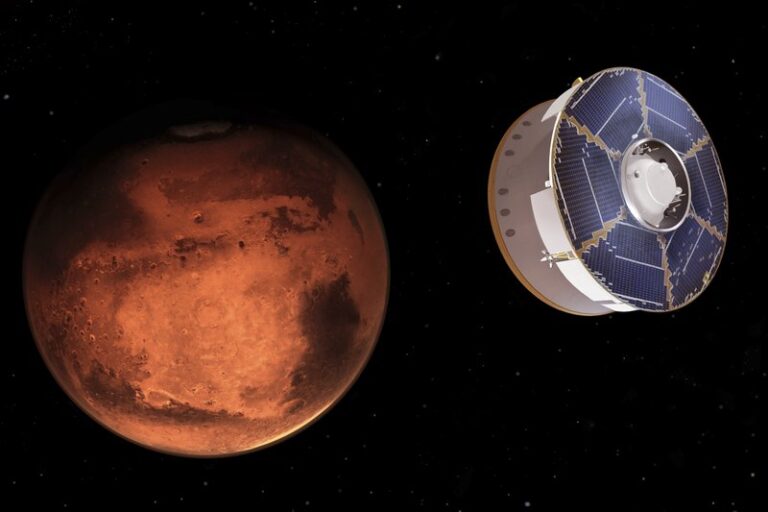
(AP) — Spacecraft aiming to land on Mars have skipped past the planet, burned up on entry, smashed into the surface, and made it down amid a fierce dust storm only to spit out a single fuzzy gray picture before dying.
Almost 50 years after the first casualty at Mars, NASA is attempting its hardest Martian touchdown yet.
The rover named Perseverance is headed Thursday for a compact 5-mile-by-4-mile (8-kilometer-by-6.4-kilometer) patch on the edge of an ancient river delta. It’s filled with cliffs, pits, sand dunes and fields of rocks, any of which could doom the $3 billion mission. The once submerged terrain also could hold evidence of past life, all the more reason to gather samples at this spot for return to Earth 10 years from now.While NASA has done everything possible to ensure success, “there’s always this fear that it won’t work well, it won’t go well,” Erisa Stilley, a landing team engineer, said Tuesday. “We’ve had a pretty good run of successful missions recently and you never want to be the next one that isn’t. It’s heartbreaking when it happens.”
A look at NASA’s latest mission:
MARS MASTER
NASA has nailed eight of nine landing attempts, making the U.S. the only country to achieve a successful touchdown. China hopes to become the second nation in late spring with its own life-seeking rover; its vessel entered orbit around Mars last week along with a United Arab Emirates spacecraft. The red planet’s extremely thin atmosphere makes it hard to get down safely. Russia has piled up the most lander losses at Mars and moon Phobos, beginning in the early 1970s. The European Space Agency also has tried and failed. Two NASA landers are still humming along: 2012′s Curiosity rover and 2018′s InSight. Launched last July, Perseverance will set down some 2,000 miles (3,200 kilometers) away at Jezero Crater, descending by parachute, rocket engines and sky crane. The millions of lines of software code and hundreds of thousands of electric parts have to work with precision. “There’s no go-backs. There’s no retries,” deputy project manager Matt Wallace said Wednesday.
LOOKING FOR SIGNS OF LIFE
Where there was water, there may have been life. That’s why NASA wants Perseverance snooping around Jezero Crater, once home to a lake fed by a river. It’s now bone dry, but 3.5 billion years ago, this Martian lake was as big and wet as Nevada and California’s Lake Tahoe. Perseverance will shoot lasers at rocks judged most likely to contain evidence of past microscopic life, analyzing the emitted vapor, and drill into the best candidates. A few dozen core samples — about a pound’s worth (one-half kilogram) of rock and dust — will be set aside in sealed titanium tubes for future pickup.






